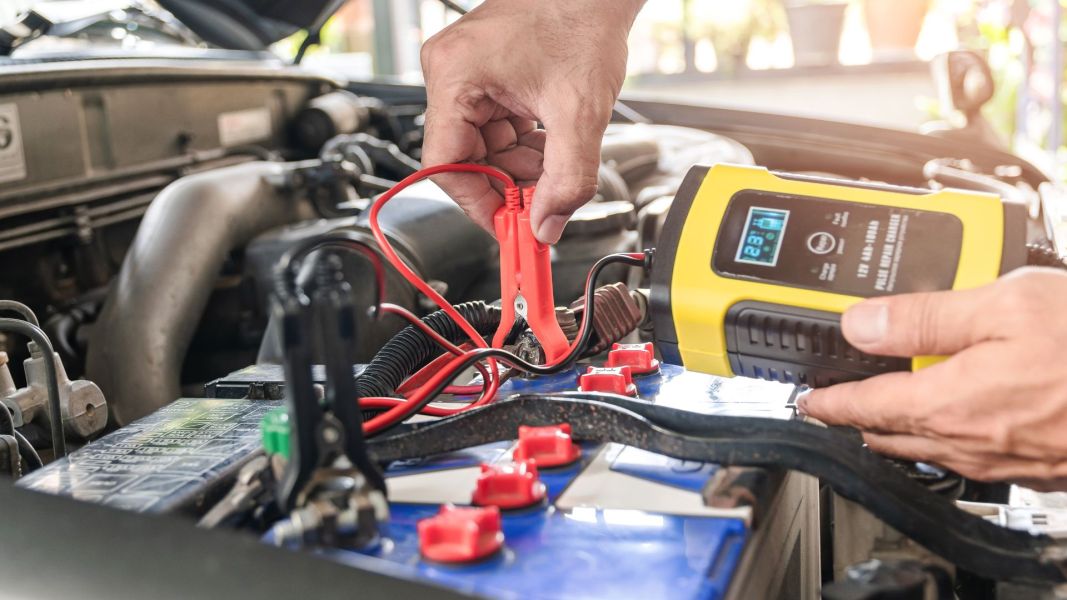Smart drivers stay prepared for any emergency. While you’re diligent about regular maintenance and repairs, you never know when the unexpected may happen — including your battery dying while commuting or on a long trip. Equipping yourself with a NOCO battery charger is a smart move. This guide reveals what you need to know about NOCO’s chargers: their features, benefits, and where to buy them.

Analyzing the Features of NOCO Battery Chargers
Do you know what to do if car battery dies? Having a NOCO battery charger in your truck is an excellent starting point. The Ohio-based brand is best known for its Boost chargers lithium battery jump starters that power up a dead battery in seconds. With more than a century of research, development, and manufacturing expertise under its belt, NOCO has significantly expanded its product line to include its Powersport lithium batteries and Genius chargers.
NOCO’s Genius battery chargers expand on the charging capabilities of the original Boost lineup. The GENIUS series includes compact, energy-efficient, and high-performance chargers. The NOCO GENIUS2 is an excellent example, packed with several key benefits:
- Precision Charging: Its integrated thermal sensor adjusts charge levels over time, adapting to ambient temperatures to avoid over-charging.
- Multiple Battery Types: The GENIUS2 can charge traditional lead-acid, gel, maintenance-free, and AGM batteries.
- Dead to Charged: With its start-voltage sensor, any GENIUS series charger can power up batteries as low as one volt. Force mode allows you to charge zero-volt batteries.
- Auto-Detect and Repair: This feature allows the charger to check for sulfation and acid stratification, then repair and reverse any damage.
- Compatible Clamp Size: Incorporating needle-nose profiles, the GENUIS2’s clamps can fit batteries of any shape or size.
Other features and benefits include an advanced diagnostic panel with indicators for high voltage, bad batteries, reverse polarity, and standby mode. With an easy-to-read panel, you can see charging levels at a glance: 25%, 50%, 75%, 100%, and maintenance status. Advanced charging lets you switch between 6- and 12-volt modes.
Tips for Efficient Battery Charging with NOCO Chargers
NOCO’s GENIUS series chargers include the GENIUS1, GENIUS2, GENUIS5, and GENUIS10 models. All offer powerful charging capabilities, but the key is to select one that best suits your needs.
With GENIUS battery chargers, the model number indicates the amount of charging current the unit produces. Models with higher outputs charge batteries at faster rates. To understand what we mean, let’s take a look at some 80-Amp charge times for a full-sized vehicle battery:
- GENIUS1: 60 hours
- GENIUS2: 30 hours
- GENIUS5: 12 hours
- GENIUS10: 6 hours
Other efficient battery charging strategies include visually inspecting the battery and checking its stats to determine health, voltage, and charge levels. The charger does the rest, starting with the recovery process, followed by a standard flow of current for bulk charging, and then finishing with absorption and optimization
Where To Find a NOCO Battery Charger
NOCO battery chargers are widely available. The best place to find one is at your preferred auto parts retailer. Choose a dealer with exceptional service, an extensive inventory, and free tools such as a free VIN lookup to help you quickly find the parts you need.

Founder Dinis Guarda
IntelligentHQ Your New Business Network.
IntelligentHQ is a Business network and an expert source for finance, capital markets and intelligence for thousands of global business professionals, startups, and companies.
We exist at the point of intersection between technology, social media, finance and innovation.
IntelligentHQ leverages innovation and scale of social digital technology, analytics, news, and distribution to create an unparalleled, full digital medium and social business networks spectrum.
IntelligentHQ is working hard, to become a trusted, and indispensable source of business news and analytics, within financial services and its associated supply chains and ecosystems




























